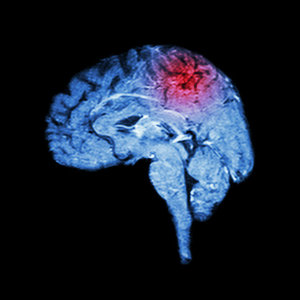As you age, you have likely been told to make healthful food choices, keep heart healthy and do things to protect the health of your brain. While issues like cognitive impairment or heart attack are probably on your radar, a “brain attack” may not be.
For older adults, the risk of stroke doubles every 10 years after age 55. A stroke is a leading cause of death in the United States, and three-quarters of strokes occur in people over age 65, but 80 percent can be prevented.
Know the stroke warning signs and protect yourself with these tips.
What causes a stroke?
Referred to as a “brain attack” by the National Stroke Association, a stroke happens when blood flow gets cut off to an area of the brain. Just like heart muscle cells begin to die after being deprived of blood during a heart attack, so do brain cells during a stroke.
A stroke can happen due to several risk factors, including:
- High blood pressure
- Diabetes
- High cholesterol
- Atrial fibrillation
- Circulation problems
- Carotid artery disease
- Having a poor diet or being overweight
- Not getting enough physical activity
- Smoking and drinking
What are the warning signs of stroke?
Symptoms of a stroke happen suddenly. If you or a loved one experiences any of the following symptoms, get emergency medical help:
- Sudden numbness, weakness, of the face, arm or leg on one side of the body
- Sudden trouble speaking, confusion or inability to understand things
- Sudden trouble seeing in one or both eyes
- Sudden dizziness, loss of balance or trouble walking
- A sudden, severe headache
The National Stroke Association recommends using the acronym FAST to remember and assess for stroke symptoms.
FACE: Ask the person to smile. Does one side of his or her face droop?
ARMS: Ask the person to raise both arms. Do one of the arms drift downward?
SPEECH: Ask the person to repeat an easy phrase. Is his or her speech slurred or strange?
TIME: Time is of the essence. If you observe any of these signs, call 911 immediately.
What can I do to prevent a stroke?
Eating a healthy diet not only helps keep you feeling your best, it can also reduce the likelihood of developing some of the chronic conditions like high blood pressure or diabetes that can lead to stroke. Try including more plant-based foods, whole grains, beans and nuts in your diet, and limit your consumption of sugar, fats, refined grains and salt.
Aim to exercise at least five times per week. This can include a 30-minute walk, jog, swim or aerobics class. You could also try breaking up activities into 10-minute sessions to make it easier.
If you smoke, quit. People who smoke have double the risk of stroke than those who do not. This is because smoking increases blood clot formation, thickens blood and can increase the amount of plaque in your arteries.
If you consume alcohol, watch your intake. Aim to consume no more than two drinks per day for men and one for women.
Preventing a stroke is possible with the right lifestyle modifications. And knowing the warning signs can help you get a friend or family member the help they need quickly.














